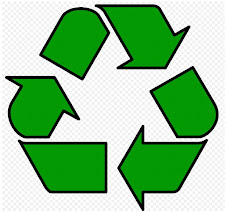For the new year, our family wants to start recycling. This will not be easy as our city does not offer recycling of any kind (curbside or otherwise). We will have to collect the items and then take them to a county recycling center every week.It is not necessary to remove labels from bottles, jars and cans before recycling, but it will help speed up the process on the other end (i.e. at the recycling plant) if you do so. You can soak off the labels, then put them in with your paper recycling, says Earth 911. Also, rinsing out cans and bottles should do the trick in getting rid of any leftover tomato sauce or other food stuff. However, with sticky substances like mayonnaise and peanut butter, you do want to get the container as clean as possible. Here's how I usually accomplish that.
We are in the process of setting up a "recycling center" in our home and are trying to figure out exactly how to recycle items. This is all new to us, so we are grateful for your "boot camp." We wondered if could answer the following questions:
Should we take the labels of glass/plastic containers before recycling?
Do glass/plastics containers have to be completely washed with soap and water, or can they just be rinsed?
What about metal or plastic lids or caps? Are they recyclable?
I read during "boot camp" that plastic bags could be recycled. What about Styrofoam?
One of my cleaning methods is to put a drop or two of dish-washing liquid in the jar, fill it halfway with warm water, put the jar cap on, and then shake to loosen the gunk. After shaking, I'll take the cap back off, fill the jar all the way with water, then let it soak overnight. In the morning a couple of rinses in the sink usually leaves the bottle spotless. Or, if I'm time-crunched or feeling lazy, I'll pop the jar in the dishwasher, which not only cleans it but usually gets rid of the label, too.
As far as bottle caps go, you should put all of your recyclables that come with tops in the recycling bin without the tops on. This is because the materials that tops are made from often aren't the same material as the containers themselves, and will have to be recycled separately down the line. Again, it makes it easier on the recycling center if you've already separated the top from its container before placing in the recycling bin.
Now recycling Styrofoam might present a bit of a challenge for you in certain circumstances. If you're talking about Styrofoam packing peanuts, then that will be easy--most UPS Store locations accept donations of clean peanuts. However, if you're talking about the Styrofoam you find in packaging around things like computers and TVs, then you might have to do a bit more legwork to find an acceptable drop-off location.
I would suggest checking out the Alliance of Foam Packaging Recyclers. This website includes an address to which you can mail used Styrofoam (mailed at your own cost, sadly) as well as a PDF of drop-off locations. But Styrofoam recycling programs aren't always on-going. Many occur once a year only, just in time for Earth Day (how convenient).
This reader's message has inspired me to research how one goes about setting up a bona fide recycling program in a town that does not offer one. I'll keep you posted on any details I uncover.












